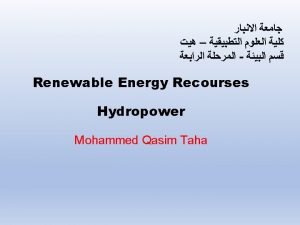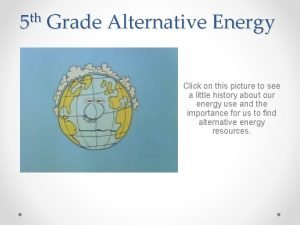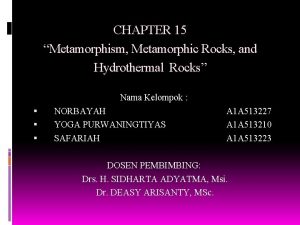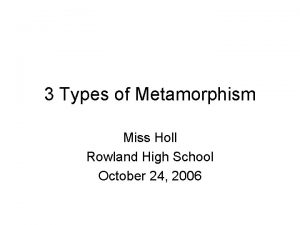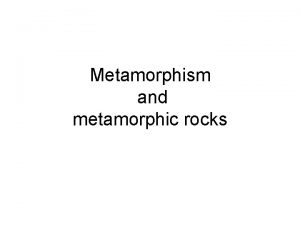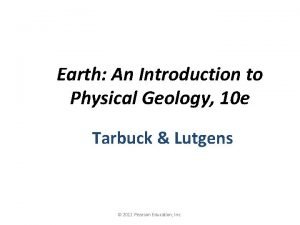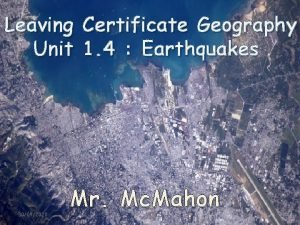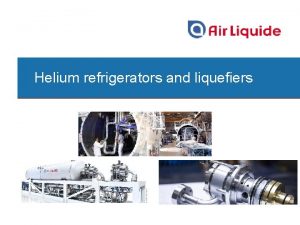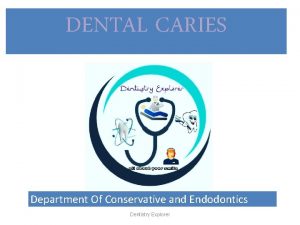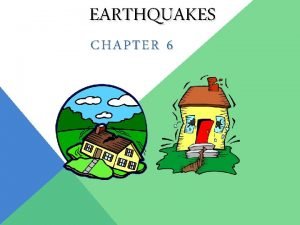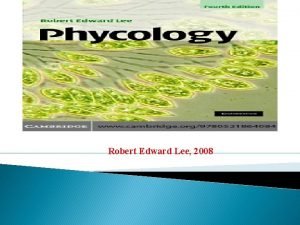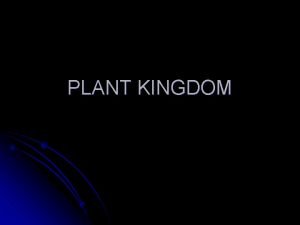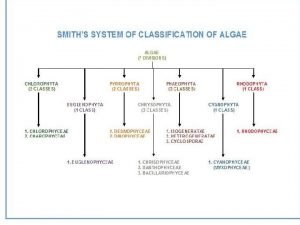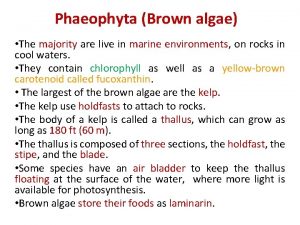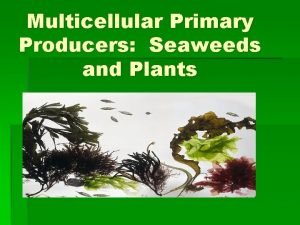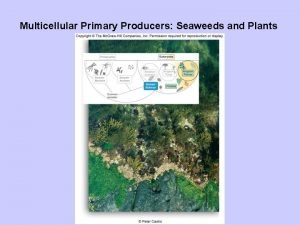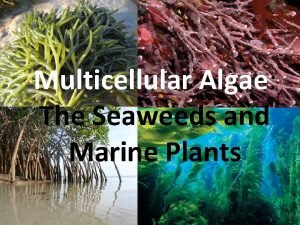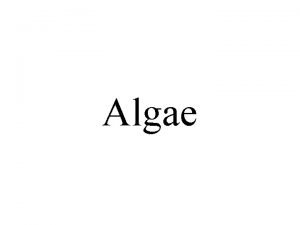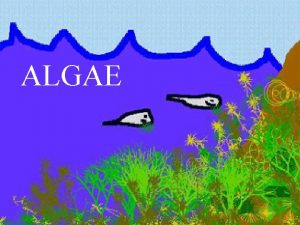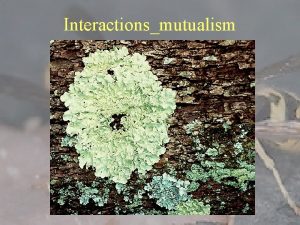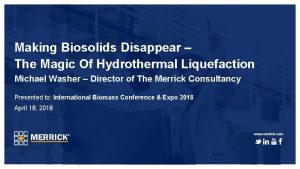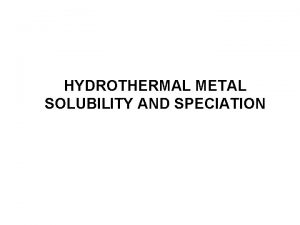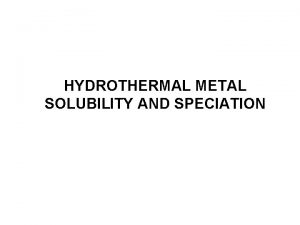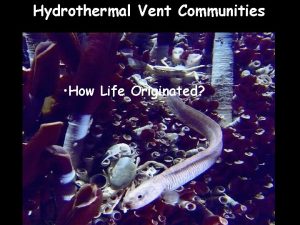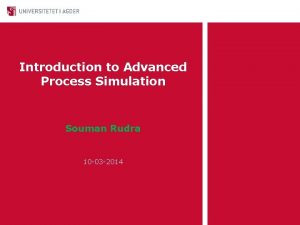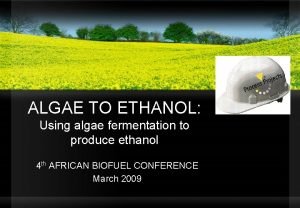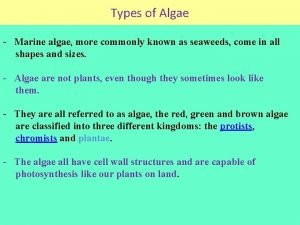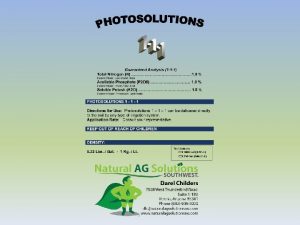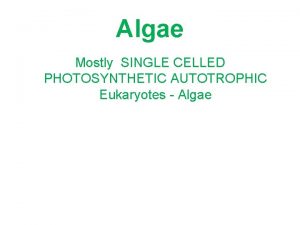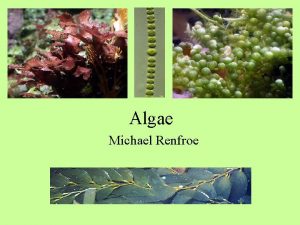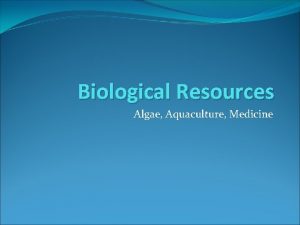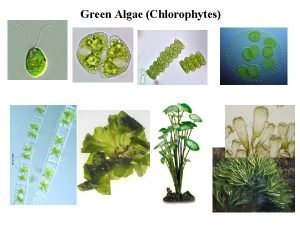Process Analysis of Hydrothermal Liquefaction of Algae Souman
























![References: [1]: Biomassmagazine. com, University of Kentucky algal research hitting the ground in China, References: [1]: Biomassmagazine. com, University of Kentucky algal research hitting the ground in China,](https://slidetodoc.com/presentation_image_h2/c2113ff4d2ff0deec8d9bc498eb15a0f/image-25.jpg)
- Slides: 25

Process Analysis of Hydrothermal Liquefaction of Algae Souman Rudra, Bjørn H. Haugstad Presented by Souman Rudra Associate Professor, University of Agder Madrid, Spain June 29 -30 Photobioreactor [2]

Outline • • • Introduction: • Microalgae • Hydrothermal Liquefaction • Aspen Plus Software Fuel characterization: • Proximate analysis • Ultimate analysis • Thermogravimetric analysis Process analysis: • Plant 1 and 2 • Sensitivity analysis heat exchanger • Overall Results • Future work 2

Microalgae • Unicellular algae • Existing in groups, chains or individual • Photosynthesis • Size from one to a few hundred micrometers • Freshwater, seawater • Grown in open-ponds or Chlorella algae [2] photobioreactor Spirulina powder [4] Microalgae cultures [3] 3

Hydrothermal Liquefaction • 4

Aspen Plus Software • Chemical process design, operation and optimization • Fluids and solids • Streams: • • Heat • Work • Material Equipment: • Mixer • Separator • Heater • Heat exchanger • Columns • Reactor 5

Fuel Characterization • • Algae: • Chlorella Vulgaris • Spirulina Platensis • Phaeodactylum Tricornutum Algae analysis: • Proximate analysis • Ultimate analysis • Thermogravimetric analysis Truls Haugsrud, Kristiansen Gartneri Grimstad [6] 6

Proximate Analysis • Structural elements of biomass: • Moisture • Volatile combustible matter • Fixed carbon • Ash C. vulgaris and S. platensis C. vulgaris P. tricornutum 7

Proximate Analysis • Volatile combustible mater (VCM), Ash and fixed carbon (FC) are on the dry basis. 8

Ultimate Analysis • Chemical elements of the biomass: • • Carbon (C), Hydrogen (H), Nitrogen (N), Sulfur (S) and oxygen (O). Heating value: • Gross calorific value (GCV) • Net calorific value (NCV) 9

Ultimate Analysis • CHN mode used in elemental analyzer. • Sulfur neglected. • Oxygen calculated by difference between 100 % and C, H, N and ash. 10

Thermogravimetric Analysis • TGA, DSC, DTG • Oxygen or Nitrogen atmosphere 11

Thermogravimetric Analysis • TGA - Thermogravimetric analysis 12

Thermogravimetric Analysis • DTG - Derivative thermogravimetry 13

Thermogravimetric Analysis • DSC - Differential scanning calorimetry 14

Process Analysis • 15

Aspen Plus Simulation • Continuous hydrothermal liquefaction, plant 1 16

Aspen Plus Simulation • 17

Simulation Results • Energy recovery: • S. platensis 46. 9 % • C. vulgaris 54. 9 % • P. tricornutum 87. 7 % • Biocrude heating value: • Higher heating value 33. 2 MJ/kg • Lover heating value 30. 8 MJ/kg 18

Sensitivity Analysis • Sensitivity analysis of heat exchanger • S. platensis 19

Sensitivity Analysis • Sensitivity analysis of heat exchanger • C. vulgaris 20

Sensitivity Analysis • Sensitivity analysis of heat exchanger • P. tricornutum 21

Overall Results • Algae analysis • • C. vulgaris was the most appropriate for fuel utilization. Process analysis • P. tricornutum highest showed the most promising results. • Potential for heat integration and optimization of the system. • Relatively low heating value of the biocrude due to the component selection in simulation. 22

Future work • More accurate component selection of products in HTL, for correct heating value. • Further heat integration and optimisation of the system. • A kinetic model of microalgae HTL should be developed for improved accuracy of simulation. 23

Thank you!! Q&A Contact : souman. rudra@uia. no 24
![References 1 Biomassmagazine com University of Kentucky algal research hitting the ground in China References: [1]: Biomassmagazine. com, University of Kentucky algal research hitting the ground in China,](https://slidetodoc.com/presentation_image_h2/c2113ff4d2ff0deec8d9bc498eb15a0f/image-25.jpg)
References: [1]: Biomassmagazine. com, University of Kentucky algal research hitting the ground in China, 19. 02. 2016. http: //biomassmagazine. com/articles/12937/university-of-kentucky-algal-research-hitting-the-ground-in-china [2]: ALGIX, How does Spirulina differ from Chlorella? , 2015. http: //algix. com/how-does-spirulina-differ-from-chlorella/ [3]: University of Georgia, DEVELOPMENT OF NEW BIOMASS; ALGAE, 2017. http: //www. biorefinery. uga. edu/biomassdevelopment. html [4]: Daily Burn; Life, The Scoop on Spirulina: Should You Eat This Microalgae? , 17. 02. 2015. http: //dailyburn. com/life/health/microalgae-spirulina-benefits/ [6]: Forskning. no, Håper på grønn revulosjon, 13. 01. 2014. http: //forskning. no/mat-og-helse-planteverden/2014/01/haper-pagronn-revolusjon 25
 Geothermal energy advantages and disadvantages
Geothermal energy advantages and disadvantages Naturally occurring areas of hydrothermal resources
Naturally occurring areas of hydrothermal resources Naturally occurring areas of hydrothermal resources
Naturally occurring areas of hydrothermal resources Serpetinit
Serpetinit Metamorphism definition
Metamorphism definition Hydrothermal metamorphism
Hydrothermal metamorphism Hydrothermal metamorphism
Hydrothermal metamorphism Foliated rocks
Foliated rocks Thermarces cerberus
Thermarces cerberus 10 causes of earthquakes
10 causes of earthquakes Pycnose reversible
Pycnose reversible Helium liquefaction temperature
Helium liquefaction temperature Millers liquefaction foci
Millers liquefaction foci Zones of dentinal caries
Zones of dentinal caries Jose caries
Jose caries Liquefaction
Liquefaction Pharmaceutical incompatibility classification
Pharmaceutical incompatibility classification Whats the main cause of most earthquakes
Whats the main cause of most earthquakes Commensalistic
Commensalistic Classification of algae by robert edward lee
Classification of algae by robert edward lee Algae are chlorophyll bearing
Algae are chlorophyll bearing Algae classification table
Algae classification table Economic importance of algae
Economic importance of algae Algae vs seaweed
Algae vs seaweed Multicellular producers
Multicellular producers Multicellular algae
Multicellular algae

